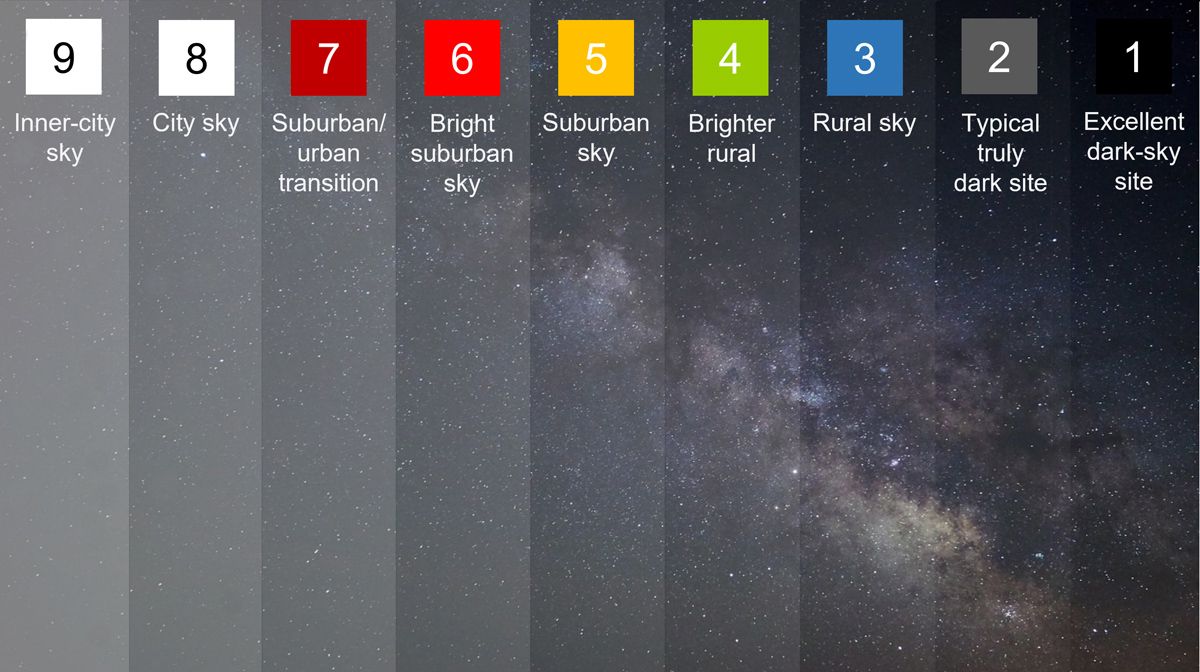Meteors occur when Earth passes through grouped particles of space debris. When each particle hits our atmosphere—at speeds up to 46 miles a second!—it vaporizes and causes a silent, glowing streak of light.
These so-called shooting stars can be caused sporadically by wandering meteoroids or routinely by a stream of debris. The latter of these two scenarios is called a meteor shower, which can be easily observed with the naked eye in the right conditions.
Helpful Astronomy Definitions
Here are some key definitions that will help you understand what you’re looking at:
- Meteor: Also known as a shooting star, meteors occur when a meteoroid or space particle enters Earth’s atmosphere at very high speeds, causing a violent compression of air, high temperatures, and a streak of light.
- Meteoroid: A small piece of space rock that creates a meteor when it enters Earth’s atmosphere.
- Meteorite: A meteoroid that hits Earth’s surface, having survived the break-up through Earth’s atmosphere.
- Comet: A celestial body of ice, dust, and rock that orbits the Sun. When it passes into the inner Solar System, solar heating causes it to adopt a coma and tails of dust and gas.
- Asteroid: A celestial body of rock and/or metal, usually ranging from a few meters to hundreds of kilometers in diameter. Asteroids are believed to be the leftover debris of planet formation.
Key Meteor Showers Visible in the Northern Hemisphere
Each meteor shower gives you the opportunity to see varying numbers of meteors in the right conditions, ranging from up to five per hour to potentially over 200. Here’s a list of the major northern annual meteor showers that give you a realistic opportunity of seeing at least ten an hour (one every five to six minutes):
|
Name |
Peak Date |
Start and Finish |
Maximum per hour |
|---|---|---|---|
|
Quandrantids |
Jan 3 |
Jan 1-6 |
90 |
|
Apr 22 |
Apr 16-28 |
15 |
|
|
Eta Aquarids |
May 6 |
Apr 21-May 24 |
60 |
|
Arietids |
Jun 7 |
May 22-Jun 30 |
55 |
|
Delta Aquarids |
Jul 28-Aug 8 |
Jul 15-Aug 19 |
200 |
|
Aug 12 |
Jul 23-Aug 22 |
90 |
|
|
Oct 21 |
Oct 5-30 |
25 |
|
|
Taurids |
Nov 4-12 |
Nov 1-25 |
10 |
|
Leonids |
Nov 17 |
Nov 14-21 |
15 |
|
Geminids |
Dec 14 |
Dec 6-18 |
100 |
|
Ursids |
Dec 22 |
Dec 17-25 |
10 |
The Aquarid meteor showers listed above are visible in the Northern Hemisphere but are best viewed in the Southern Hemisphere. Also, the Arietids is a daytime-active meteor shower, with just before dawn being the best time to see it.
Know Where the Radiant Is
Each meteor shower appears from a specific point in the sky—known as the radiant—each year. This is the point at which the debris collides with Earth’s atmosphere in Earth’s orbit around the Sun each year.
Because the sky already has its own points of reference in the form of constellations, the meteor showers’ names come from the constellations from which they appear to radiate. For example, the Lyrid meteor shower looks as though it comes from the Lyra constellation, though the shower has nothing to do with the constellation other than this positional coherence.
While learning the key constellations is a good starting point for acquainting yourself with the night sky, don’t worry if you can’t find a meteor shower’s radiant point. As long as you have the right conditions (I’ll talk about these shortly), meteors should appear from all points in the sky.
Check the Moon Phase
Observing the Moon is another great nighttime activity for stargazers, though our natural satellite is a thorn in our side when we’re trying to enjoy a meteor shower. That’s why you should use a website like AS Time and Date to check the Moon’s phase during the meteor shower.
When the Moon is in either of its gibbous phases or full, it reflects more of the Sun’s light towards Earth, meaning many of the fainter meteors and stars are washed out. On the other hand, during a crescent or new Moon, the sky is much darker, so you’re likely to see many more streaks of light passing overhead.
|

|
New Moon |

|
Waxing crescent |

|
First quarter |

|
Waxing gibbous |

|
Full Moon |

|
Waning gibbous |

|
Third quarter |

|
Waning crescent |
Check the Weather
Forgive me for stating the obvious, but few things are more frustrating than building yourself up for a night of watching meteor showers, only to then realize that it’s cloudy outside.
You’re more likely to have more success during the summer meteor showers when the weather tends to be better. However, if you get a clear night during one of the winter showers, because the sky is darker for longer, they can serve up a real treat for the eyes.
Find the Best Viewing Point
Let’s assume the forecast is good and the sky is clear. Now, it’s time to find the best location to watch the meteor shower. There are three prongs to achieving this.
First, you want a wide view. Simply put, the more of the sky you can see, the more chance you have of spotting more meteors. If you’re in your garden, position yourself away from any buildings and trees. Ideally, though, you’ll be in an open field. Just make sure the spot you choose is safe!
The second key to success is to get away from any city lights. Much like the moonlight can drown out fainter shooting stars, human-made light pollution will significantly hamper your viewing. So, use a light pollution map to locate dark-sky areas.
Finally, if you can, sit atop a high hill. The more altitude you can gain, the less of Earth’s atmosphere there will be between your eyes and space. As a result, you’ll get a clearer view (as well as a wider one) with less distortion from turbulence and light pollution.
Get Comfy, Be Patient, and Enjoy!
Choose your clothing carefully. If you really want to enjoy the spectacle, you can expect to be outside for at least a couple of hours. So, especially if you’re watching a winter meteor shower, wear plenty of layers. One of my best investments has been fingerless gloves, as wearing these means I can stay warm while using my phone to take pictures of the night sky.
Consider also buying a reclining camping chair so that you can lie backwards and look up. Failing that, use a memory foam travel pillow so that you don’t strain your neck by constantly looking upwards.
Just as important is patience! Even if you’re watching a shower that’s supposed to display dozens of meteors an hour, you might find yourself waiting longer than you expected to see one. But don’t lose hope—keep your eyes fixed on the sky, and you’ll get your reward eventually.
Meteors aren’t the only moving space-related objects you can see in the sky. As well as human-made satellites, you can track and see the International Space Station—a crewed vehicle made up of various compartments—as it flies overhead.





